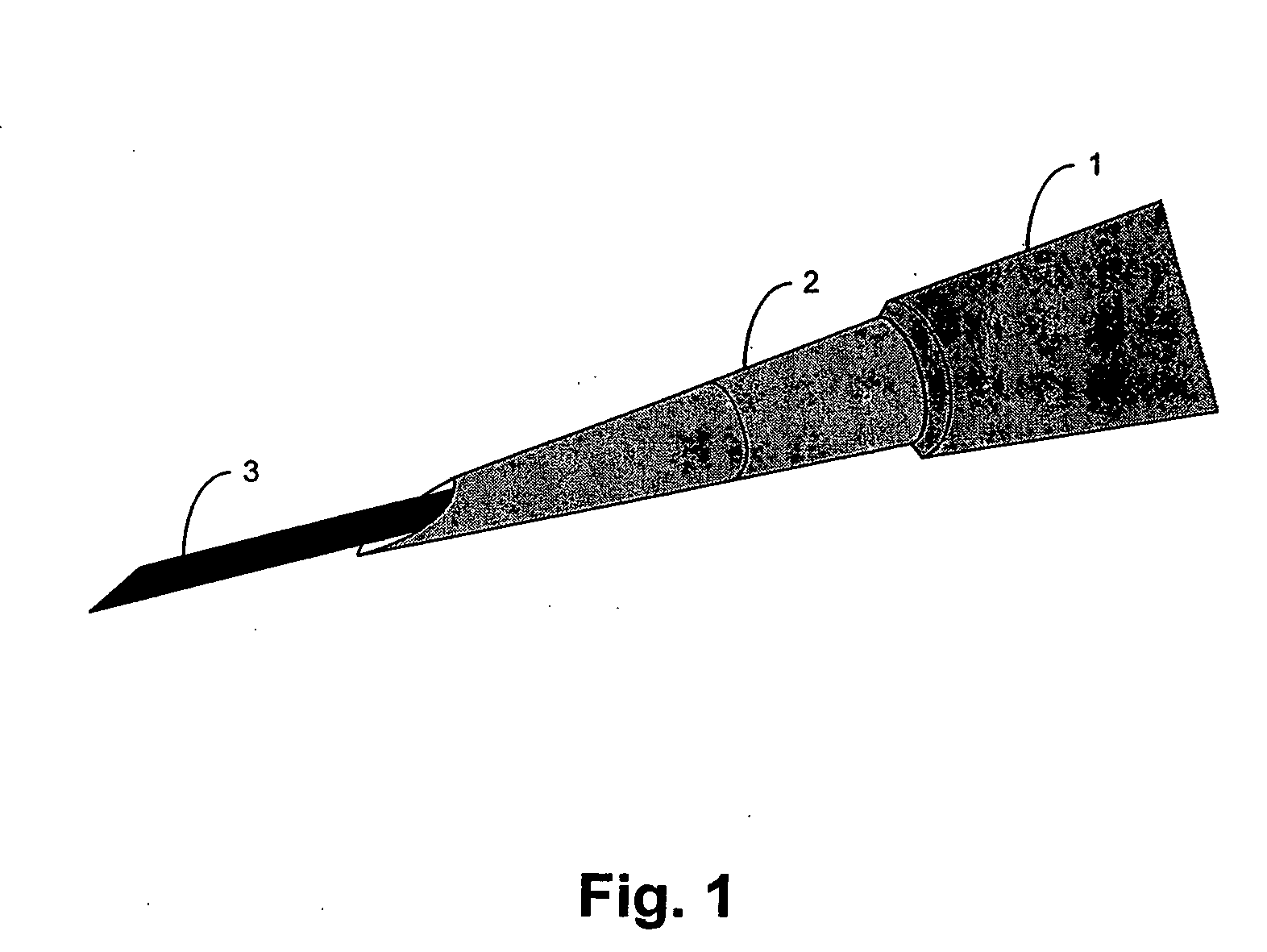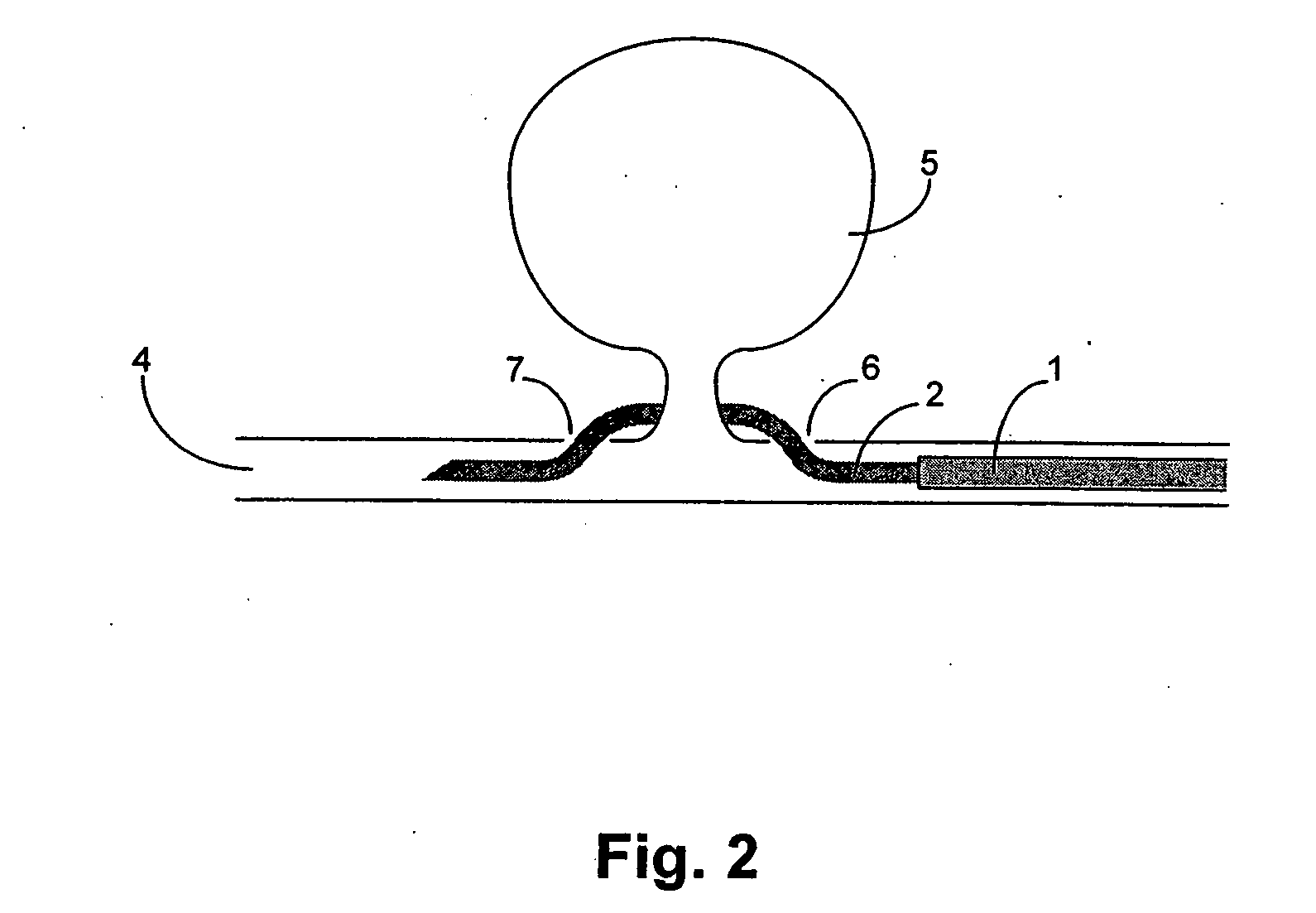Device and methods for non-surgical clipping of aneurysms
a non-surgical and aneurysm technology, applied in the field of aneurysm non-surgical clipping, can solve the problems of dramatic negative health consequences, aneurysms pose a danger, vessel rupture,
- Summary
- Abstract
- Description
- Claims
- Application Information
AI Technical Summary
Benefits of technology
Problems solved by technology
Method used
Image
Examples
Embodiment Construction
[0017]FIG. 1 illustrates a device for the use in the non-surgical clipping of an aneurysm. The guiding catheter 1 encompasses a guiding needle 2 which encompasses a wire comprising a shape memory alloy 3.
[0018] The guiding catheter 1 is essentially any catheter known in the art capable of getting to the affected area (i.e., the lumen of a blood vessel or artery proximal to an aneurysm) and allowing the passage of a guiding needle.
[0019] The guiding needle 2 is a hollow tube with a needle tip at its distal end. The guiding needle can perforate the wall of the blood vessel thus allowing the properly shaped guiding needle to exit and re-enter the vessel lumen. The guiding needle can be made of any known material that can pass through the guiding catheter, and is shaped with the appropriate curvature such that it can exit and re-enter the vessel lumen, and that can deliver the wire comprising a shape memory alloy. Such materials include, but are not limited to, metal or a reinforced p...
PUM
 Login to View More
Login to View More Abstract
Description
Claims
Application Information
 Login to View More
Login to View More - R&D
- Intellectual Property
- Life Sciences
- Materials
- Tech Scout
- Unparalleled Data Quality
- Higher Quality Content
- 60% Fewer Hallucinations
Browse by: Latest US Patents, China's latest patents, Technical Efficacy Thesaurus, Application Domain, Technology Topic, Popular Technical Reports.
© 2025 PatSnap. All rights reserved.Legal|Privacy policy|Modern Slavery Act Transparency Statement|Sitemap|About US| Contact US: help@patsnap.com



